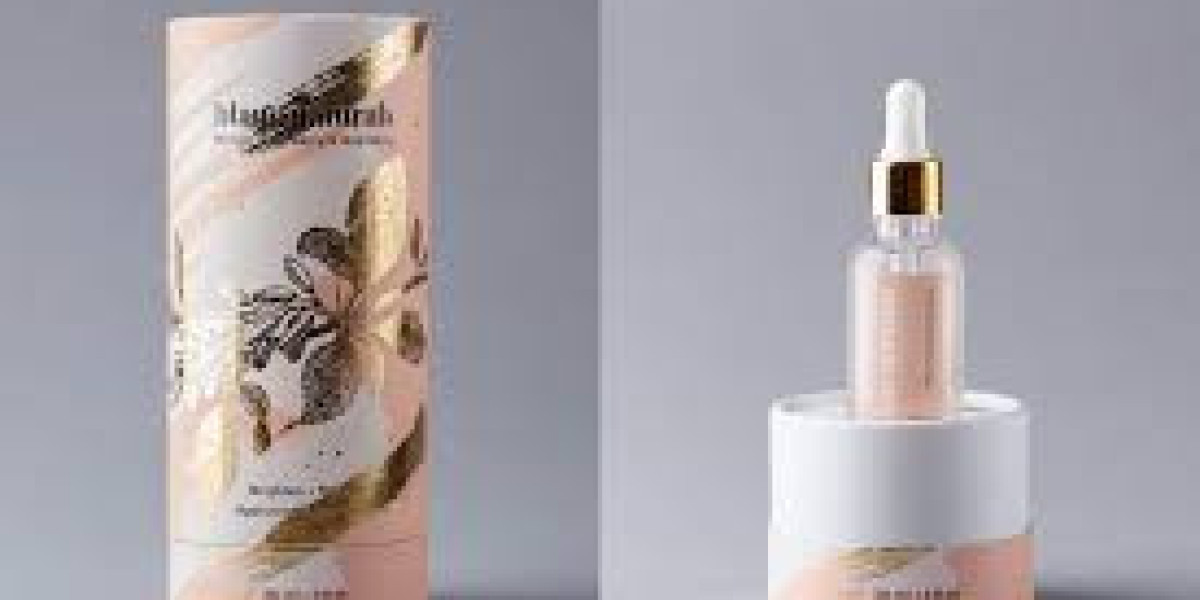Cosmetic packaging is more than just a protective covering for beauty products; it is a key element of branding, marketing, and consumer experience. The right packaging can enhance a product's appeal, communicate brand identity, and influence purchasing decisions. From sustainability concerns to innovative designs, the cosmetic packaging industry is constantly evolving. In this article, we will explore the significance, trends, and innovations shaping the world of cosmetic packaging.
The Importance of Cosmetic Packaging
Cosmetic packaging serves multiple purposes, including:
Protection: It ensures that products remain intact, uncontaminated, and effective until they reach consumers.
Brand Identity: Packaging plays a crucial role in brand recognition, helping products stand out on crowded shelves.
Convenience: Functional packaging enhances user experience through easy application, storage, and portability.
Marketing Tool: Eye-catching designs, colors, and typography help attract consumers and create a strong brand presence.
Compliance and Information: Packaging includes essential product details such as ingredients, expiration dates, and usage instructions, ensuring transparency and regulatory compliance.
Types of Cosmetic Packaging
The cosmetic industry uses a wide range of packaging materials and formats, depending on the product type and brand aesthetics. Some common types include:
1. Plastic Packaging
Plastic is widely used due to its lightweight nature, durability, and cost-effectiveness. Common plastic types include PET (Polyethylene Terephthalate), PP (Polypropylene), and HDPE (High-Density Polyethylene). Plastic packaging is used for products like shampoos, lotions, and lip balms. However, concerns over environmental sustainability have led brands to explore eco-friendly alternatives.
2. Glass Packaging
Glass packaging exudes luxury and sophistication, making it a popular choice for high-end skincare, perfumes, and serums. Glass is recyclable and preserves product integrity by preventing chemical reactions. However, it is heavier and more fragile than plastic, which can impact transportation costs.
3. Metal Packaging
Aluminum and tin packaging are commonly used for products such as lip balms, solid perfumes, and deodorants. Metal provides excellent protection from light and air, preserving the potency of active ingredients. It is also a sustainable choice due to its recyclability.
4. Paper and Cardboard Packaging
Paper-based packaging is gaining popularity due to its eco-friendliness. Many brands use cardboard boxes, paper tubes, and biodegradable pouches for secondary packaging. It is lightweight, cost-effective, and customizable, making it an excellent choice for sustainable beauty brands.
Trends in Cosmetic Packaging
As consumer preferences evolve, brands are embracing innovative Custom Cosmetic packaging trends to stay ahead in the competitive beauty market. Some key trends include:
1. Sustainable Packaging
Eco-conscious consumers are demanding environmentally friendly packaging. Brands are responding by adopting biodegradable, recyclable, and refillable packaging solutions. Examples include bamboo compacts, compostable pouches, and refill stations for skincare and makeup products.
2. Minimalist and Aesthetic Designs
Minimalism is a growing trend in the beauty industry. Simple, clean designs with neutral color palettes and elegant typography create a sense of sophistication. Many luxury brands are adopting minimalist packaging to align with modern consumer tastes.
3. Smart and Interactive Packaging
Technology-driven packaging solutions, such as QR codes, augmented reality (AR), and NFC (Near Field Communication) tags, provide consumers with interactive experiences. Scanning a QR code on a cosmetic product can lead to tutorials, ingredient details, or personalized skincare recommendations.
4. Airless Packaging
Airless packaging helps preserve product efficacy by preventing exposure to air and contaminants. This type of packaging is ideal for serums, foundations, and moisturizers, as it extends shelf life and reduces the need for preservatives.
5. Custom and Personalized Packaging
Brands are leveraging personalization to enhance consumer engagement. Custom-printed packaging with a buyer’s name, skin type details, or exclusive designs adds a personal touch, making the product feel unique and special.
Innovations in Cosmetic Packaging
Technological advancements are driving groundbreaking innovations in cosmetic packaging. Some noteworthy innovations include:
1. Biodegradable and Compostable Materials
Innovations in material science have led to the development of packaging made from plant-based bioplastics, mushroom mycelium, and seaweed. These materials break down naturally, reducing environmental impact.
2. 3D-Printed Packaging
3D printing allows for rapid prototyping and customization of cosmetic packaging. Brands can create intricate designs with precision while reducing material waste.
3. Refillable and Reusable Packaging
Major beauty brands are introducing refillable packaging models to minimize plastic waste. Consumers can purchase a product once and refill it with eco-friendly pouches or cartridges.
4. UV-Resistant and Light-Protective Packaging
Some beauty products, particularly those with active ingredients like Vitamin C and retinol, require protection from light exposure. Packaging innovations include UV-resistant coatings and opaque materials to preserve product integrity.
The Future of Cosmetic Packaging
The future of cosmetic packaging is geared towards sustainability, functionality, and aesthetics. Brands that invest in sustainable materials, smart packaging, and user-centric designs will thrive in the competitive beauty industry. As technology advances, we can expect further innovations that merge beauty with science, offering consumers a seamless and sustainable experience.
Conclusion
Cosmetic packaging is a powerful tool that influences consumer perception and purchasing decisions. From eco-friendly materials to interactive technology, the industry continues to evolve to meet the demands of modern consumers. Brands that prioritize sustainability, innovation, and user experience will set themselves apart in the ever-changing beauty market. Investing in high-quality, sustainable, and aesthetically pleasing packaging is no longer an option but a necessity in today’s beauty industry.









